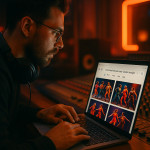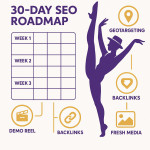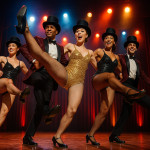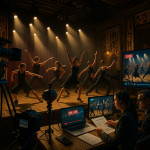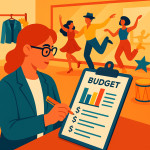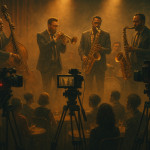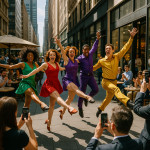Synchronizing jazz solos with lighting: tech specs stage managers love reading
Discover how to translate the spontaneity of a jazz solo into a perfectly timed lighting sequence. This guide gives stage managers and lighting technicians the exact specs, workflows and rehearsal hacks they crave.
Why syncing lighting to a jazz solo is worth the effort
Jazz thrives on improvisation. Matching that creative spark with light intensifies audience immersion and highlights each musician's story. Precise lighting cues can:
- Amplify emotional peaks during trumpet or saxophone breaks.
- Guide audience focus to featured players without camera cuts.
- Create visual structure inside what feels like free-form music.
Production teams that master this synergy often secure prime slots on venue calendars and attract repeat bookings through platforms such as high-visibility jazz talent directories.
From swing to bebop: mapping tempo to light cues
Know the jazz tempo palette
Bebop solos can hit 240 BPM, while a sultry swing ballad may linger at 80 BPM. Tempo dictates cue density. Faster solos need tighter timing windows—often one cue every half-measure.
Translating audio to trigger data
Three trigger methods dominate:
- MIDI Time Code (MTC) – favoured for its 1 ms accuracy.
- Audio-to-MIDI plugins – convert a live feed from the soloist's mic into velocity values.
- Manual bump buttons – still vital when improvisation veers off the chart.
Core tech specs that make stage managers smile
| Component | Spec benchmark | Why it matters for jazz cues |
|---|---|---|
| Lighting console | 96 sub-masters + MTC input, 1024 DMX channels | Leaves headroom for spontaneous fixture swaps. |
| DMX network | Art-Net or sACN, < 5 ms latency | Prevents timing drift on rapid drum fills. |
| Audio interface | 44.1 kHz, 64-sample buffer (≈ 5 ms) | Keeps MIDI conversions in tight sync. |
| Stage clock | Word clock over BNC or PTP-IP | Locks console, DAW and video servers to one pulse. |
| Wireless DMX | Adaptive FHSS, < 7 ms end-to-end | Lets follow-spots roam without cable spaghetti. |
Latency checkpoints
Stage managers should log total round-trip latency (audio → trigger → fixture) under 50 ms. Anything longer risks visible cue lag on up-tempo solos.
Source : USITT & ESTA Standards
Building a bullet-proof cue sheet
- Chart the solo structure – bars, chord changes, anticipated trade-fours.
- Assign lighting states – colour, gobo, pan/tilt intensity for each section.
- Add safety buffers – ¼ beat early on fast passages to mask network jitter.
- Label manual overrides – “Grand Master Fader 7: brass stabs” for last-second solos.
- Print + digital copy – PDF for the pit, CSV for the console import.
Rehearsal workflow that actually works
Step 1: silent programming
Programmers pre-cue scenes in an empty theatre using a playback recording.
Step 2: tech run with house lights
Musicians stay on stage; LX operator fires cues in full brightness to verify timing.
Step 3: dress rehearsal in show conditions
Here, colours, haze and follow-spots reveal any missed cues. Record the run for post-show tweaks.
Step 4: hot notes & contingency
- Keep a foot pedal to trigger blackout in case of MIDI dropouts.
- Assign a stagehand to shadow patch cables for quick swaps.
Need extra alignment tips? Our article on lighting-audio coordination grids lays out fool-proof routing diagrams.
Real-world rig examples
| Venue type | Fixture count | Control protocol | Typical cue density |
|---|---|---|---|
| 150-seat jazz club | 12 PAR LEDs, 2 movers | DMX512 (single universe) | 1 cue / 4 bars |
| Festival big top | 36 movers, 8 strobes | Art-Net over fibre | 1 cue / bar |
| Broadcast studio | 24 movers, 60 pixel tubes | sACN with PTP sync | Sub-beat strobe hits |
Common pitfalls & rapid fixes
- Problem: Soloist drifts from click. Fix: Set visual metronome on a down-stage LED for subtle guidance.
- Problem: Network lag during sax high note. Fix: Use dedicated VLAN; throttle Art-Net broadcast.
- Problem: Colour temp clashes with video camera white balance. Fix: Program dual presets: “Live” (3200 K) and “Broadcast” (4400 K).
Advanced enhancements for wow moments
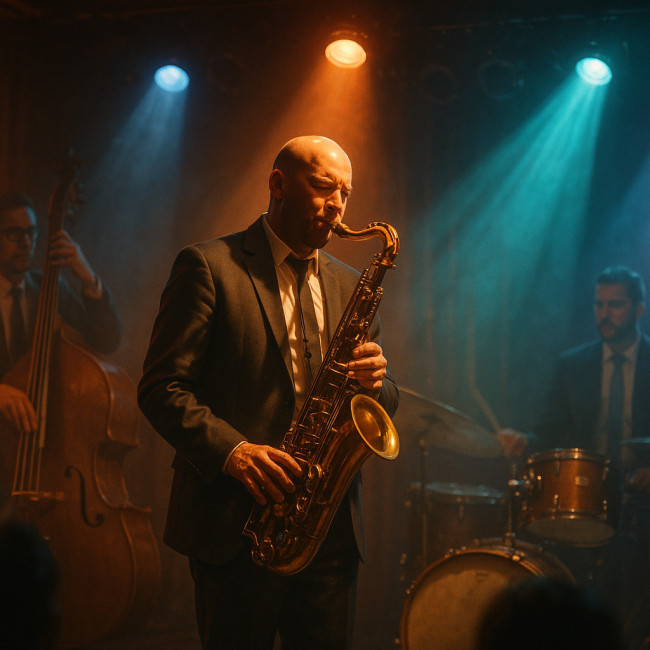
Once the basics are tight, layer in pixel-mapped gradients that ripple across fixtures in the horn's register range. Integrate collaborative lighting tools to share 3D pre-vis renders with directors, and consider partnering with lighting experts for larger tours. For a show-stopping touch, synchronize low-fog swells with double-bass glissandos and let motorized gobo wheels echo trumpet trills, a technique that touring LDs swear adds cinematic depth without overloading the rig. The best designers often script these accents directly in a visualizer like Depence², ensuring the colour narrative grows organically rather than feeling like a pre-baked macro.
Test your knowledge
FAQ
- Do I need a click track to sync lighting with improvised solos?
- No, but a subtle metronome feed or visual tempo light helps soloists keep within latency buffers.
- Can wireless DMX handle fast jazz cues reliably?
- Yes, if you use adaptive frequency-hopping systems and keep end-to-end latency below 7 ms.
- How many rehearsals are ideal before opening night?
- At least three: silent programming, tech with house lights, and full dress under show conditions.
- What's the quickest backup if MIDI Time Code fails mid-show?
- Switch to manual bump buttons mapped to key cue clusters and use a foot pedal for global changes.
Wrap-up & next steps
When jazz solos and lighting cues dance in perfect sync, audiences feel every riff in colour. Equip your team with the specs above, run the rehearsal workflow, and you'll deliver a show that venues talk about for seasons to come. Ready to level up? Download our free cue sheet template and start programming tonight.
